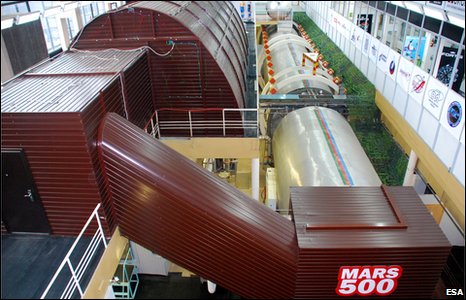 This week, Science Friday arrives on Saturday with a special edition all about the exploration of extreme environments on Earth and beyond. Take a dive with some surprise Antarctic shrimp, witness the power of fire under the ice in Iceland, prep for a human journey to the cold, red planet Mars, and get a peak of some Soviet relics on the moon. And our gadget of the week can take you to the edge of space for those on a very tight budget.
This week, Science Friday arrives on Saturday with a special edition all about the exploration of extreme environments on Earth and beyond. Take a dive with some surprise Antarctic shrimp, witness the power of fire under the ice in Iceland, prep for a human journey to the cold, red planet Mars, and get a peak of some Soviet relics on the moon. And our gadget of the week can take you to the edge of space for those on a very tight budget.
Surprise Shrimp Under Antarctic Ice
Bob Bindschadler of NASA’s Goddard Space Flight Center and his team of jointly funded NASA-NSF scientists were startled at what they saw swimming beneath the West Antarctic Ice sheet last November. The science team was sending down a video camera to observe the underside of the ice sheet when a pinkish-orange creature swam into the camera’s view. It turned out to be the three-inch long Lyssianasid amphipod, found 600 feet down and 12.5 miles from open water. It’s not unusual to find amphipods and other marine life in Antarctic waters. The complex circulatory system of the surrounding ocean brings warm, salty, nutrient-rich water towards the Antarctic continent, helping to sustain life even in the cold, dark winter. But for a group of glaciologists, a familiar face was the last thing they expected to see below the ice and so far from the open ocean.
Iceland Volcano Erupts, Hundreds Evacuated
Hundreds of people in southern Iceland were evacuated last Sunday after the eruption of a volcano beneath the surface of a glacer, promting concerns of flooding. The volcano under the Eyjafjallajokull glacier (say that three times fast) had not erupted since 1821. Eyjafjallajokull is approximately 100 miles (160 kilometers) east of the capital, Reykjavik. Scientists monitored a crack measuring 1,640 to 3,281 feet (500 to 1,000 meters) in the volcano from which lava was erupting as more than 600 people were removed from the area, according to reports. No injuries have been reported, and the volcanic activity has continued throughout the week. Scientists are now hard at working monitoring the volcano under the ice. Check out the videos below! Incredible!
‘Mars 500’ Prep for Human Mission to Mars
A Belgian, two Frenchmen and a Colombian-Italian have agreed to be locked away in steel containers for 18 months to simulate a mission to Mars. The Europeans will join a predominantly Russian crew for the Mars500 project, which is due to start in May. All the food and water needed for the “journey” will have to be loaded into the “spacecraft” before “departure”. There will even be a simulated landing. After about 250 days, the crew will be split in two, and three “cosmonauts” will move into a separate container to walk on the “surface of the Red Planet” wearing modified Russian Orlan spacesuits. Looking after the participants’ needs will be a mission control-room sited just outside the containers. But the experiment’s designers are determined to make the training exercise as realistic as possible, so they will introduce a time delay in communications after two months. Because it can take about 20 minutes for a message to travel from Mars to Earth, it will take this amount of time in the simulation, also. (via BBC News)

The Mars 500 habitation
LRO Spots Soviet Moon Landers
NASA’s Lunar Reconnaissance Orbiter has spotted and photographed a couple pieces of lunar history from the Cold War era. While NASA was launching the manned Apollo missions in the early 70s, the Soviet Union successfully launched three ‘Luna’ robotic sample return missions. Earlier this month the LRO spotted Luna 16, Luna 20, and Luna 24. You can learn more and explore all the images at the LRO Website.

Soviet’s Luna 16 – spotted by LRO
Gadget of the Week: DIY Stratospheric Camera
Who needs the Space Shuttle to take pictures of the Earth from Space when you got a cheap digital camera and some duct tape?
British inventor Robert Harrison has developed a home-made aeriel camera system that flies 20 miles up via a balloon and takes pictures from the edge of space, with a cost of only about £500. The box wrapped in duct tape contains a basic digital camera and a GPS tracking device so he can retrieve it after it falls back to the earth. More info at the BBC and watch it in action below.
Extreme photography
And the Project Icarus team at MIT have pulled off the same feat for only $148, and they have a how-to guide so you can do it yourself. Watch an interview the Icarus team from CNN below.
MIT students go to edge of space for $148
Science Quickies
Not enough science for you? Here’s a warp-speed look at some more science tid-bits that are worth a look.
- British scientists working for the military are developing ‘Star Trek-style’ force-field armor for tanks
- Tobacco is being reasearched as a potential biofuel
- A 30,000 – 50,000 year old humanoid fossil is being described as "X-Woman" may be from a new species of human
TrekMovie’s Science Friday is an homage the the great NPR radio show Science Friday. Science Friday® is a registered service mark of ScienceFriday Inc.

Re: Gadget of the Week: DIY Stratospheric Camera
Are those JJ-style lens flares I can see during that real-life footage..? :D
Love to set up a camera like that!
I thought the headline said “Exploring Extreme Environmentalists” at first! You’d have to come to Oregon for that!
So we have satellites in orbit around earth that can photograph a car license plate, yet the camera on the satellite they send up to the moon looks like its trying to take photographs through cataracts. What gives??
How’s my favorite jug of wine? }:-D>
The video of the shrimp is not safe for work. :)
Uh oh! Some one better tax that volcano for all the carbon it’s putting in the air!
:-P
cool….:)